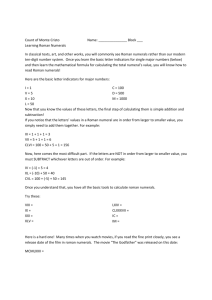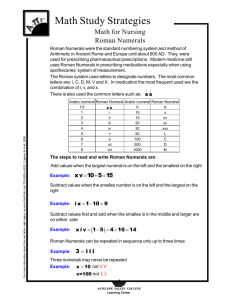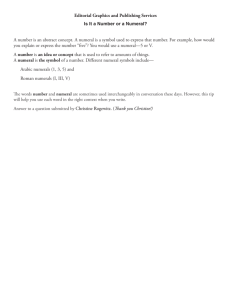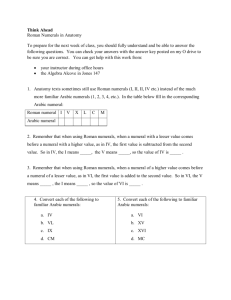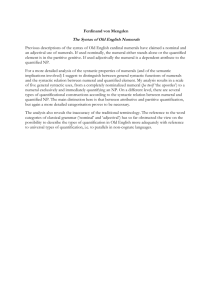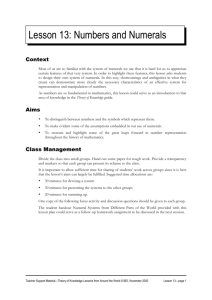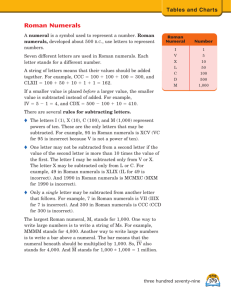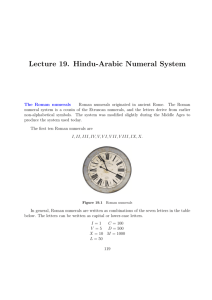Roman Numerals 0
advertisement
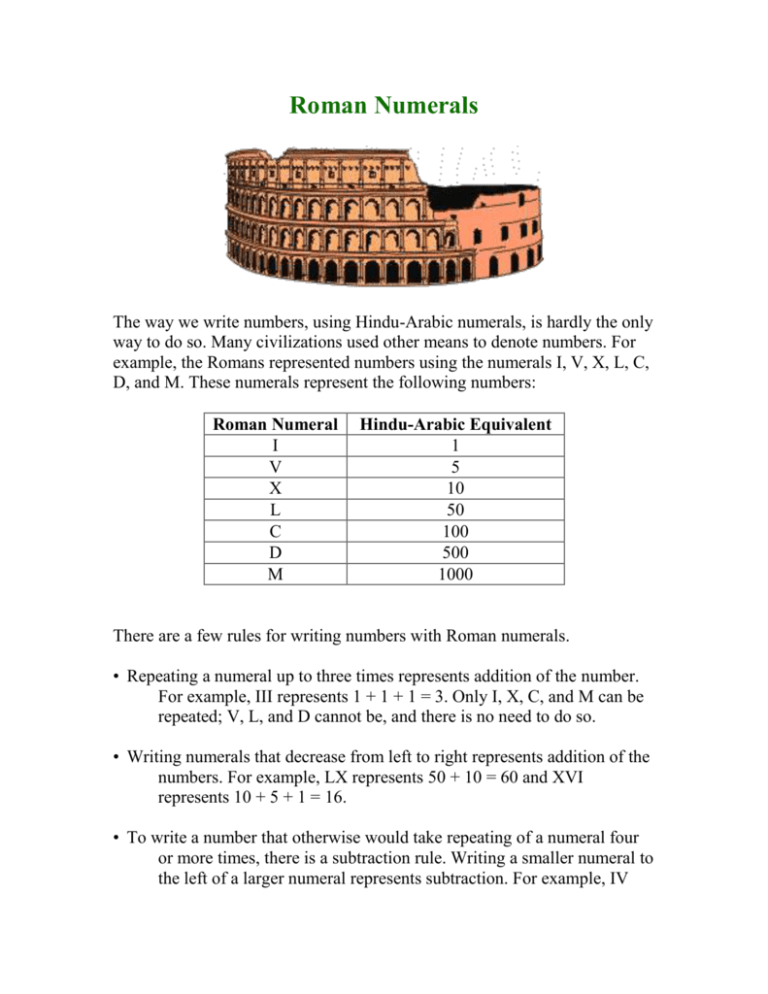
Roman Numerals The way we write numbers, using Hindu-Arabic numerals, is hardly the only way to do so. Many civilizations used other means to denote numbers. For example, the Romans represented numbers using the numerals I, V, X, L, C, D, and M. These numerals represent the following numbers: Roman Numeral I V X L C D M Hindu-Arabic Equivalent 1 5 10 50 100 500 1000 There are a few rules for writing numbers with Roman numerals. • Repeating a numeral up to three times represents addition of the number. For example, III represents 1 + 1 + 1 = 3. Only I, X, C, and M can be repeated; V, L, and D cannot be, and there is no need to do so. • Writing numerals that decrease from left to right represents addition of the numbers. For example, LX represents 50 + 10 = 60 and XVI represents 10 + 5 + 1 = 16. • To write a number that otherwise would take repeating of a numeral four or more times, there is a subtraction rule. Writing a smaller numeral to the left of a larger numeral represents subtraction. For example, IV represents 5 - 1 = 4 and IX represents 10 - 1 = 9. To avoid ambiguity, the only pairs of numerals that use this subtraction rule are: Roman Numeral IV IX XL XC CD CM Hindu-Arabic Equivalent 4=5-1 9 = 10 - 1 40 = 50 - 10 90 = 100 - 10 400 = 500 - 100 900 = 1000 - 100 • To represent larger numbers, a bar over a numeral means to multiply the number by 1000. For example, represents 1000 x 500 = 500,000 and represents 1000 x 1000 = 1,000,000, one million. Problem 1. Write the following numbers using Roman Numerals: a. b. c. d. 47 123 1998 2345 Problem 2. Write the following numbers using Hindu-Arabic numerals: a. b. c. d. DCXLVIII MMDXLIX MCMXLIV MCMXCIX Problem 3. What is the largest number you can write in Roman numerals without using bars? Problem 4. Perform the following arithmetic operations. Can you do these without converting the numbers to usual notation? a. LXVI + XXXIV b. CXLVII + MCV c. XXXIV × XLV
